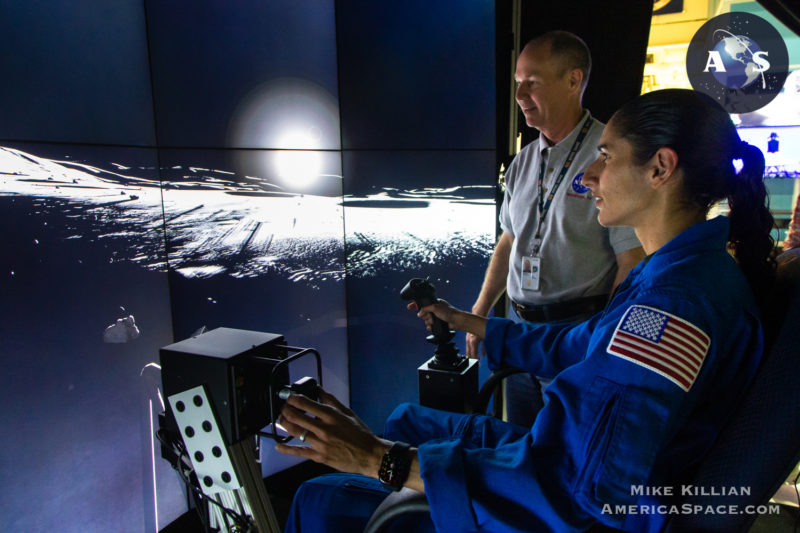
With nine days to go before the world’s most powerful rocket—the gargantuan Space Launch System (SLS)—takes flight from historic Pad 39B at the Kennedy Space Center (KSC) in Florida, NASA has announced target landing sites for the historic Artemis III mission, which is currently set to return humans to the surface of the Moon no sooner than April 2025 for the first time since the end of Project Apollo. On Friday afternoon, senior NASA managers from the agency’s Washington, D.C., headquarters, revealed a cluster of potential landing sites near the lunar south pole which the Artemis III astronauts may visit.
With the 322-foot-tall (98-meter) SLS having rolled out to Pad 39B earlier this week for the six-week Artemis I mission, an uncrewed test flight around the Moon, currently scheduled to launch no earlier than 8:33 a.m. EDT Monday, 29 August, attention inevitably now turns to subsequent flights. Earlier this month, NASA Chief Astronaut Reid Wiseman announced his intent to assign crew members for Artemis II, the first crewed mission to lunar distance since Apollo 17, later this fall.
But whilst Artemis II—whose four-person crew is expected to include a Canadian astronaut, the first non-American ever to leave low-Earth orbit—is scheduled as a circumlunar voyage in the second half of 2024, Artemis III offers the added plum of the first landing on the Moon in more than five decades. Its crew is widely touted as including the first woman to set foot on another world.
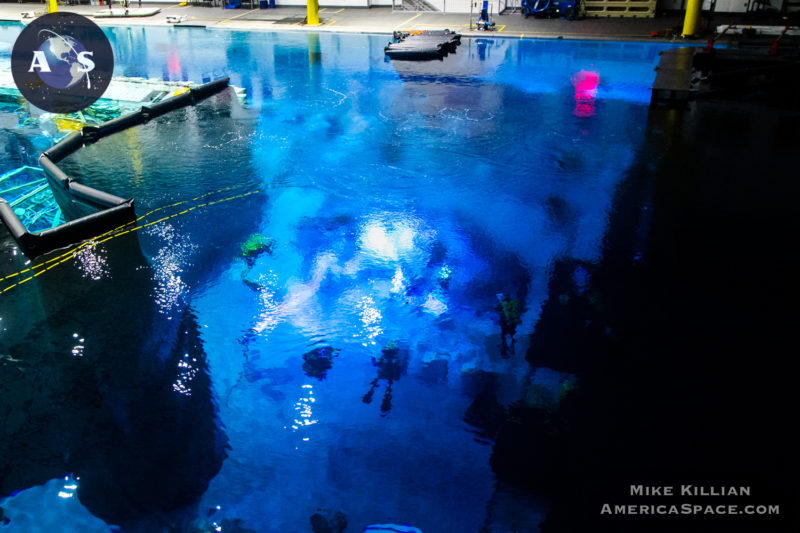

However, although 18 astronauts—nine men and nine women—were identified to the world by then-Vice President Mike Pence as the “Artemis Team” back in December 2020, Wiseman’s remarks indicate that the entire 42-strong corps of active-duty astronauts remain eligible for assignment to these pioneering missions. “As long as you’re healthy,” he told journalists with a wizened grin earlier in August, “we’re going to load you into a rocket and shoot you off the planet.”
Against this backdrop of crew-assignment speculation, the Orion spacecraft for Artemis III has been taking shape on multiple fronts for several years. Under the language of the $2.7 billion Orion Production and Operations Contract (OPOC), awarded by NASA to prime contractor Lockheed Martin in September 2019, it was noted that the Artemis III Crew Module will also be flown on the Artemis VI mission later this decade.
Back in August 2020, the Artemis III Crew Module’s first machined element—a cone-panel with window-openings—was delivered by AMRO Fabricating Corp. of South El Monte, Calif., to NASA’s Michoud Assembly Facility (MAF) in New Orleans, La., for welding to the pressure vessel. And last summer, Lockheed Martin opened its Spacecraft Test, Assembly and Resource (STAR) center in Titusville, Fla., which will expedite the production and processing of Orion vehicles, beginning with Artemis III.
In June of this year, proof testing of the pressure integrity of the Crew Module was completed. The Artemis III Service Module, built by the European Space Agency (ESA), is scheduled to be shipped from its construction location in Bremen, Germany, to KSC sometime next summer.
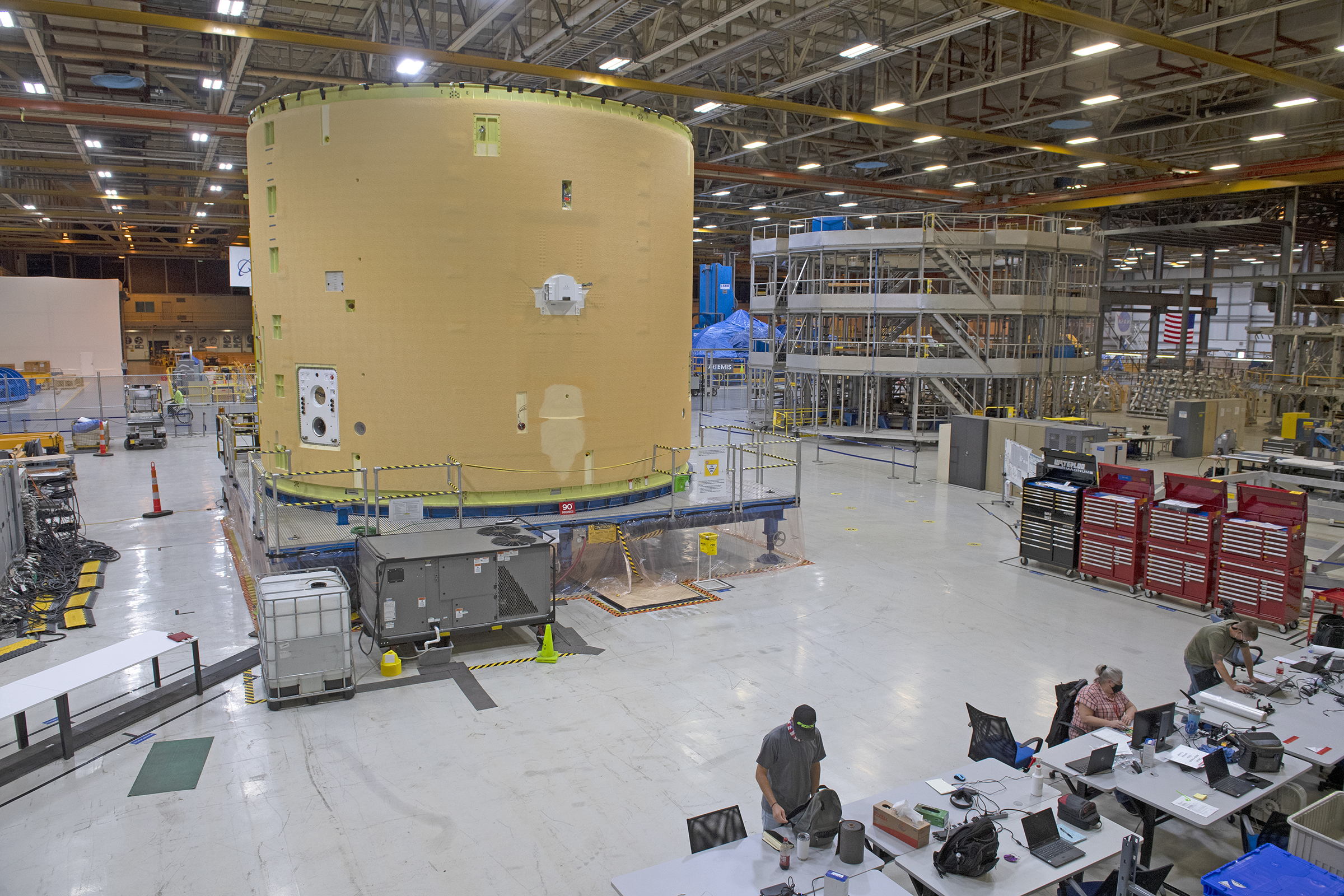
Elsewhere, by December 2020 friction-stir welding of the SLS Core Stage hardware for Artemis III was well underway. And in May of this year, the ten segments for Artemis III’s pair of five-segment Solid Rocket Boosters (SRBs) were completed and placed into storage at prime contractor Northrop Grumman Corp.’s facility in Promontory, Utah.
In tandem with the SLS and Orion, SpaceX was controversially selected by NASA in April 2021 for the $2.89 billion contract to develop its Starship Human Landing System (HLS) for Artemis III, beating competitors Dynetics and a National Team, led by Blue Origin. Two of the four Artemis III astronauts—one of them expected to be a woman—will descend to the surface at some point after April 2025 for about 6.5 days and up to five sessions of Extravehicular Activity (EVA).
And those EVAs will occur in perhaps the darkest, coldest and least hospitable environments ever visited on the Moon. Unlike Apollo, whose six landings between July 1969 and December 1972 favored equatorial zones, Artemis seeks to establish a human presence close to the lunar south pole, whose permanently shadowed craters are known to harbor large reserves of water-ice bound up in rocks and regolith.
These unique regions, virtually untouched by sunlight, are thought to act as “cold traps”, preserving water-ice, hydrogen and other volatiles carried to the Moon tens of millions of years ago by comets and meteorites. As such, the lunar south pole offers nothing short of a pristine “library” of Solar System evolution, just waiting to be read.
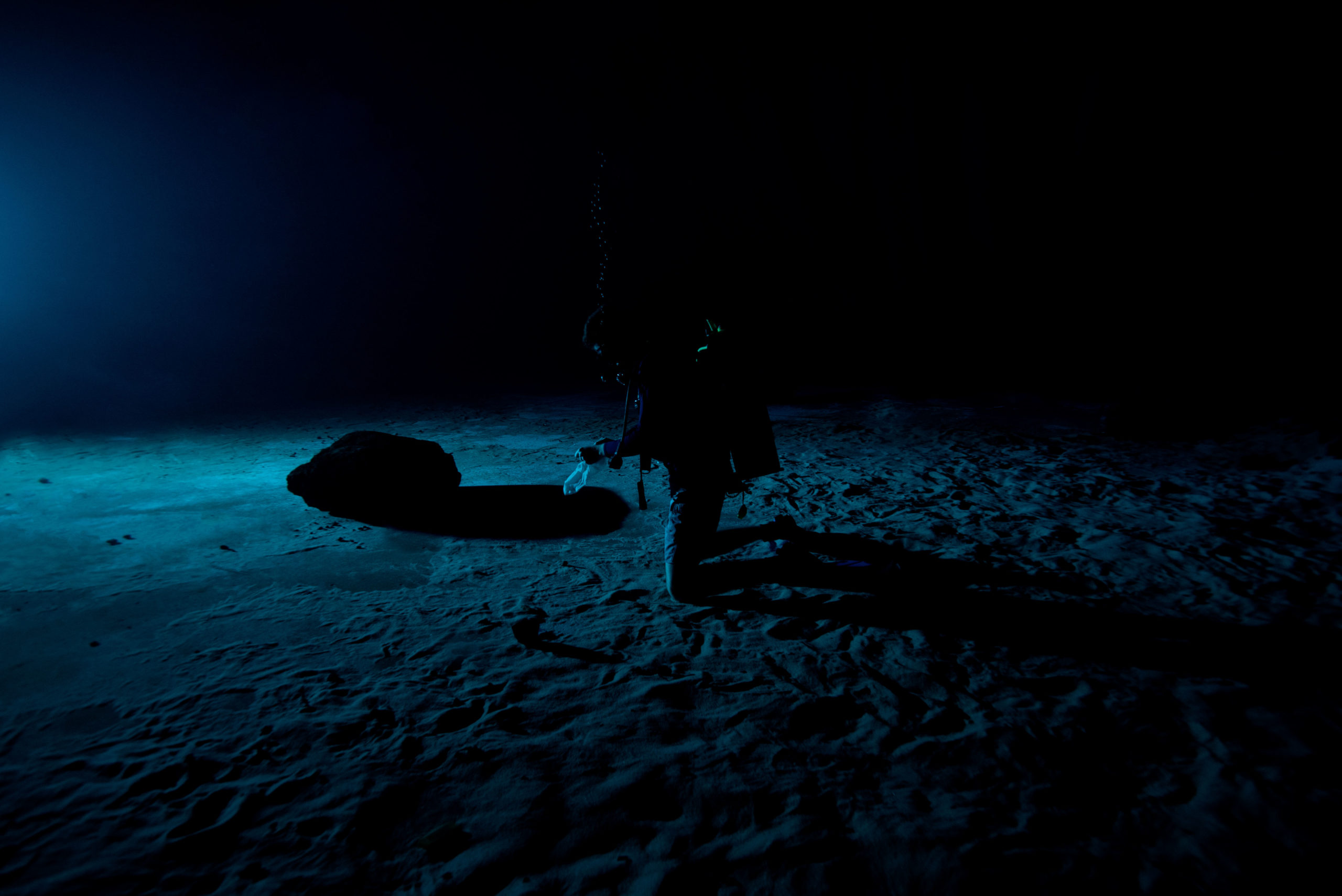
Thirteen candidate landing regions were unveiled today, each situated within six degrees of latitude from the pole, each exhibiting various geological structures and each containing multiple potential touchdown spots for Artemis III. Each will ensure continuous sunlight for the Artemis III landing crew during their time on the surface, whilst also permitting access to permanently shadowed regions to collect samples in “uncompromised” areas to understand the depth, distribution and composition of polar ice.
To select the regions, scientists and engineers assessed the pole using data from the Lunar Reconnaissance Orbiter (LRO) and evaluated regions based upon their ability to support a safe landing, using criteria including terrain slope, ease of communications with Earth and lighting conditions. “Several of the proposed sites within the regions are located among some of the oldest parts of the Moon,” said Sarah Noble, NASA’s Artemis lunar science lead for the Planetary Science Division, “and together with the permanently shadowed regions, provide the opportunity to learn about the history of the Moon through previously unstudied lunar materials.”
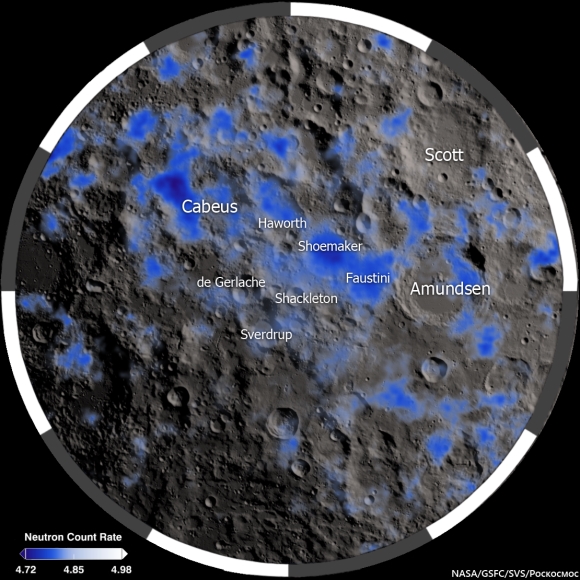
The regions include the rim of Faustini, an impact crater whose interior lies in almost permanent darkness and is sufficiently cold—below 100 Kelvin—as to trap water vapor from primordial cometary impactors. Lunar Prospector data also showed that Faustini has higher-than-usual concentrations of hydrogen, although water-ice has yet to be observed.
Two locations on the rim of the roughly circular De Gerlache impact crater, together with a massif linking it to Kocher Crater, are also under consideration. So too is an area on the rim of the 32-mile-wide (51-kilometer) Haworth impact crater and two spots on the western and northeastern rims of heavily eroded and deeply shadowed Nobile Crater, currently targeted as the landing site for NASA’s Volatiles Investigating Polar Exploration Rover (VIPER), which will launch in November 2024.
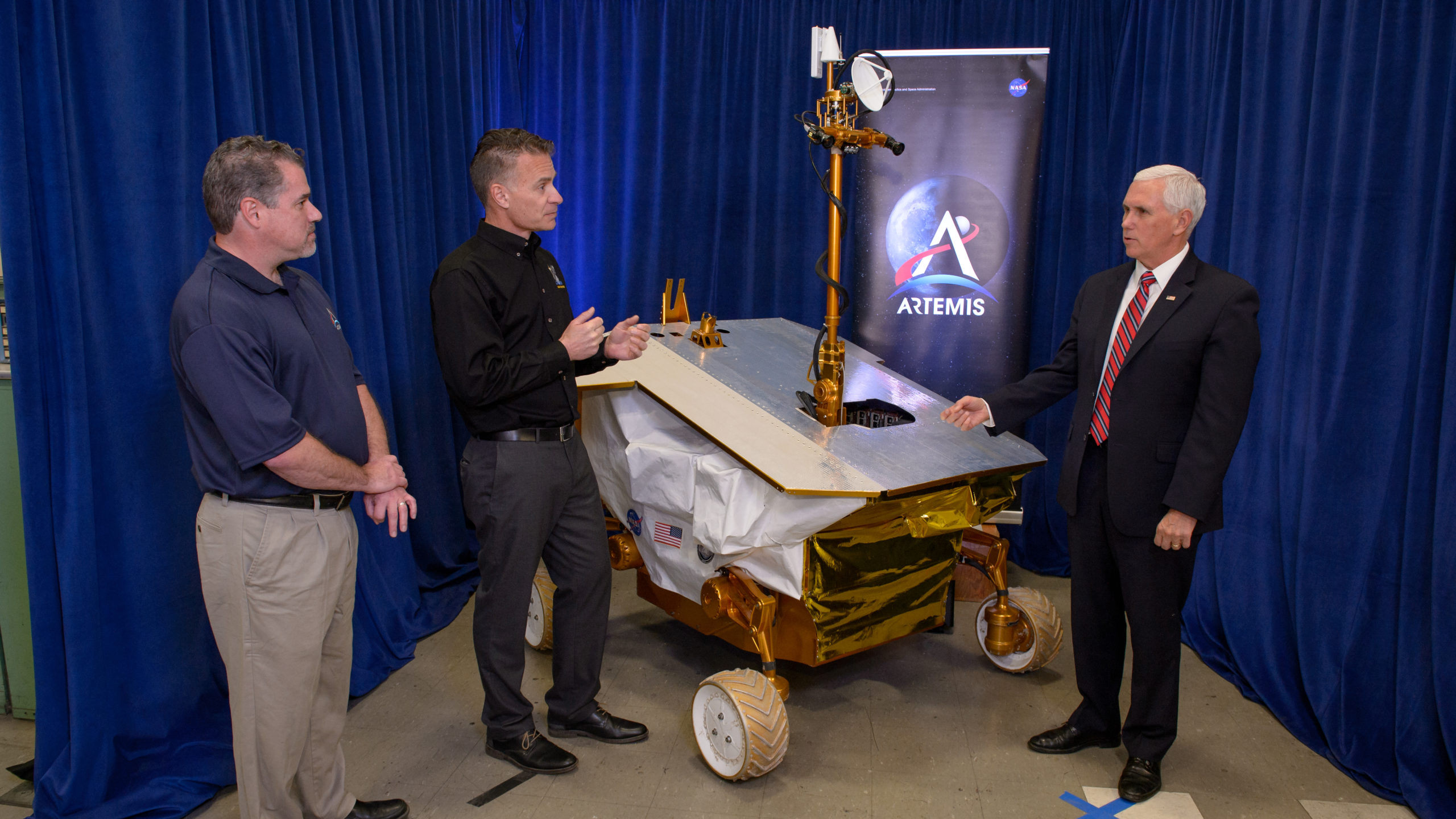
Other possible sites include a 3-mile-high (5-kilometer) ridge-like massif at the southwestern edge of Malapert Crater, the Liebnitz Beta Plateau and the rim of the 64-mile-wide (103-kilometer) Amundsen Crater, the latter of which may contain large quantities of solid carbon dioxide ice with great potential for future In-Situ Resource Utilization (ISRU) technologies.
Finally, a group of areas in the environs of Shackleton—a 13-mile-wide (21-kilometer) impact crater, whose rim is in near-perpetual sunlight, yet whose interior lies in almost eternal darkness—round out the Artemis III candidates. More than 3.6 billion years old, the intensely cold environs of Shackleton have aroused great interest from the astronomical community as a possible location for a lunar-sited infrared telescope.
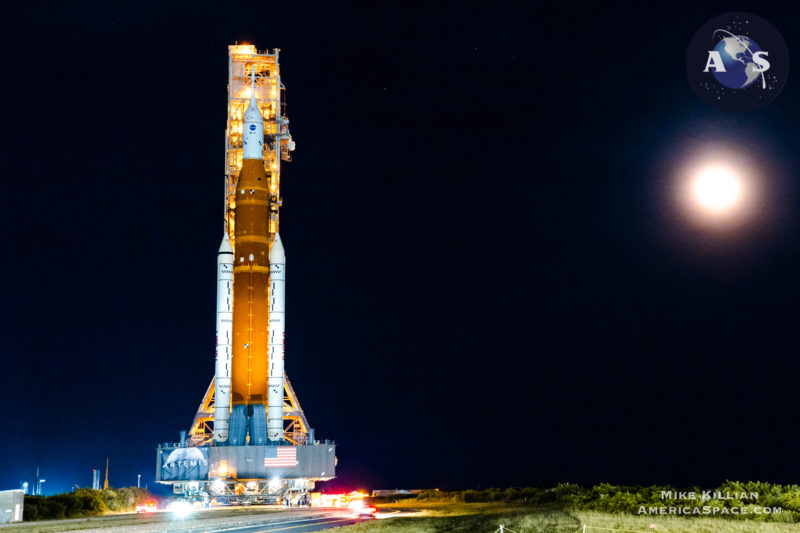
Current plans envisage the “firming-up” of the Artemis III landing site, and the down-selection of candidates, in the mid-2024 timeframe, assuming a target launch date for the mission in the fall of 2025. This will permit around 18 months for dedicated flight and trajectory planning and crew training.
“Selecting these regions means we are one giant leap closer to returning humans to the Moon for the first time since Apollo,” said Mark Kirasich, deputy associate administrator for the Artemis Campaign Development Division at NASA Headquarters in Washington, D.C. “When we do, it will be unlike any mission that’s come before, as astronauts venture into dark areas previously unexplored by humans and lay the groundwork for future long-term stays.”
.
.
FOLLOW AmericaSpace on Facebook and Twitter!
.
.
Missions » SLS » Missions » SLS » Artemis »



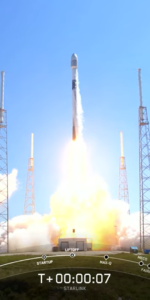
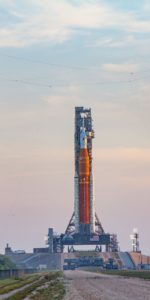
One Comment
One Ping
Pingback:Notes from our October 28, 2022 Meeting - Midwest Astronomy and Space Society